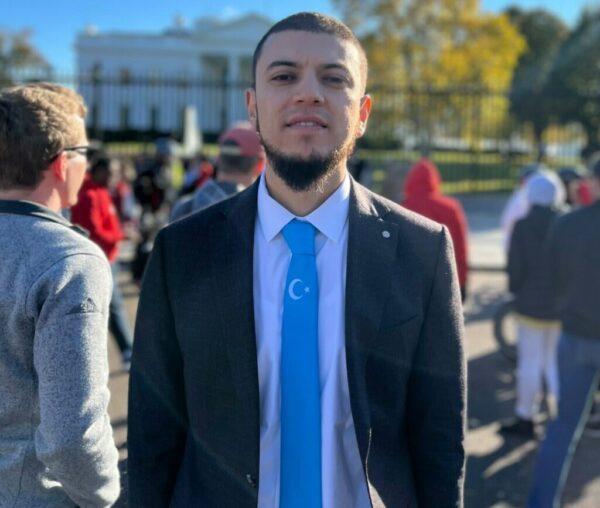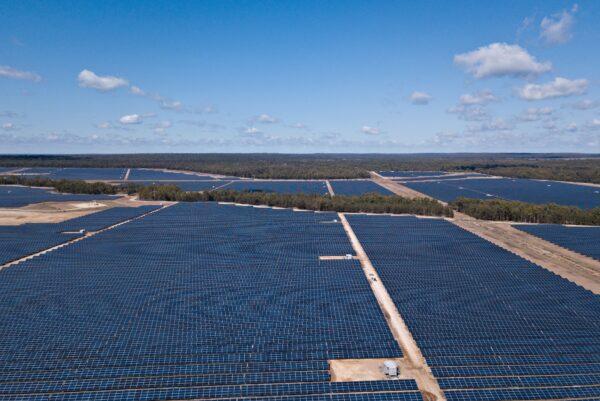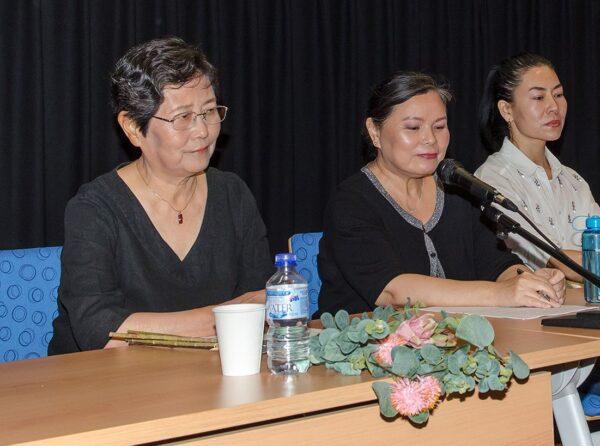At least six in every 10 of Australia’s largest solar farms have sourced solar panels from supply chains vulnerable to China’s Uyghur forced labour programmes.
The United States, Australia, and other western countries have condemned the Chinese Communist Party (CCP) over its human rights abuses against more than a million Uyghurs in Xinjiang, including its use of mass detention, slave labour, and forced sterilisation.
But one industry exposed to the communist regime’s forced labour programme is one that Australia has become increasingly more dependent on—solar power.
An investigation by The Epoch Times has uncovered that at least 60 percent of Australia’s biggest operating solar farms feature arrays of panels made by one of these companies.
Panel-makers include JinkoSolar, Chinese-Canadian company Canadian Solar, Trina Solar, JA Solar, Astronergy/Chint, and LONGi, which had all been found to be customers of one or more polysilicon suppliers engaged in Uyghur slave labour programmes.
Furthermore, as pointed to by the report, JinkoSolar—one of Australia’s most common solar panel brands—and Trina Solar both directly participated in these same forced labour programmes.
These solar panel manufacturers can also be found across Australia, ranging from smaller-scale solar farms to the rooftops of many Australian households and businesses.
Australian Government Nowhere To Be Seen, Uyghurs Say
The Uyghur community has expressed deep concern that the Australian government has made no progress in addressing the CCP-led slave labour programmes in solar and other industries.A member of the Australian Uyghur community and human rights campaigner Arslan Hidayat said that many companies were not looking into the supply chains of their products.
“One would assume that companies would be looking into their supply chains deeper,” Hidayat told The Epoch Times.
“But generally speaking, these companies are [handing] off to secondary or other intermediary companies to pick the labour force, and so they’re simply just not aware of the situation.”

Hidayat explained that better legislation would force companies to look more deeply into the supply chains of their products.
“If the government had set out laws, just like what you have in the United States with the Uyghur Forced Labor Prevention Act, then companies would have to take certain precautions; otherwise, they'd be financially punished,” he said. “And so that’s what we’re hoping for.”
Australia’s solution to tackling forced labour has taken shape in the form of the Modern Slavery Act enforced in 2019, requiring companies with annual revenue of more than AU$100 million (US$76 million) to report and address risks of slave labour in their supply chains.
Fears Forced Labour Has Driven Down the Cost of Solar
Reports of forced labour in China’s solar manufacturing industry have prompted concern that the low price of solar energy has come at the cost of human rights.The Commonwealth Scientific and Industrial Research Organisation (CSIRO), Australia’s government-funded scientific research institution, has lauded solar as the cheapest form of energy in Australia.
But Nationals Senator Matt Canavan said he was troubled that many groups had been pushing for solar power without considering the ethical implications of China’s forced labour campaign.
“There are multiple and credible reports that China has used slave labour to artificially suppress the cost of solar panel production,” Nationals Senator Matt Canavan told The Epoch Times.

“It is outrageous that many claim that solar power is cheap without disclosing the potential that this could be due to the oppression of the proud Uyghur peoples.”
Despite Australia’s rapidly growing demand for solar, the country has no ability to manufacture its own solar components.
Canavan added to the growing chorus calling for Australia to shift away from China for its solar imports, a move that could potentially see the birth of Australia’s own solar-making industry.
Chinese Regime’s Decades of Forced Labour and Human Rights Abuses
The Chinese Communist Party’s use of mass detention and forced labour dates back long before the exploitation of Uyghurs in Xinjiang, occurring on a mass scale with its persecution campaign against members of the spiritual practice of Falun Dafa.Falun Dafa, also known as Falun Gong, is a spiritual practice that features moral teachings based on the principles of truthfulness, compassion, and tolerance, along with a set of slow-moving exercises. The discipline swelled in popularity in China during the 1990s, with estimates placing the total number of practitioners between 70 million and 100 million by the end of the decade.
In 1999, the CCP deemed the practice a threat to its regime and initiated a nationwide persecution campaign to eradicate the practice. Millions of adherents have since been thrown into jails, labour camps, detention centres, and other facilities, where they are subjected to torture, brainwashing, and forced organ harvesting.
In January 2002, Tian Feng Ying, a Falun Dafa practitioner and former high school teacher, was arrested and sent to a labour and “re-education” camp for three years.
She recounted how she was held in abhorrent conditions and abused by guards while being forced to make numerous products, including embroidered blankets and Christmas flower decorations—all of which were exported overseas.

“If the police officers saw that you were moving slightly slower than usual, you would be severely reprimanded and cursed at. As a result of the high-pressure environment enforced by the guards, I vomited and felt dizzy three times—the doctor’s diagnosis was high blood pressure,” Tian told The Epoch Times.
Tian said that although she was forced to work 12 to 13 hours a day—with many days involving working throughout the night—the prison guards’ main focus was to force her to renounce her belief in Falun Dafa using any means possible.
“I was confined to a cell, unable to step out of the room, nor see the sun, for one year,” Tian recalled. “They didn’t allow me to phone or meet with my family. In the confinement cell, I could not sit down when asked to stand up and also could not stand if asked to sit. I completely lost all personal freedom.”
“I was forced to sit on a 10cm high and 10cm wide stool but was not allowed to move, even a little bit. Any movement would result in being punched and kicked or my hair pulled and torn. Long hours of sitting caused the skin on my buttocks to form ulcers that bled and were filled with pus. Sometimes I was forced to stand continuously for days without any movement until my feet and legs were swollen. Sometimes I was not allowed to drink water nor use the toilet. The officers often cursed at me for no apparent reason. There, I had no dignity, nor any basic human rights.”
Tian moved to Perth, Australia, in 2015, but stories similar to hers have continued to emerge amid the CCP’s ongoing human rights abuses against Uyghurs, Falun Dafa followers, and other prisoners of conscience.





